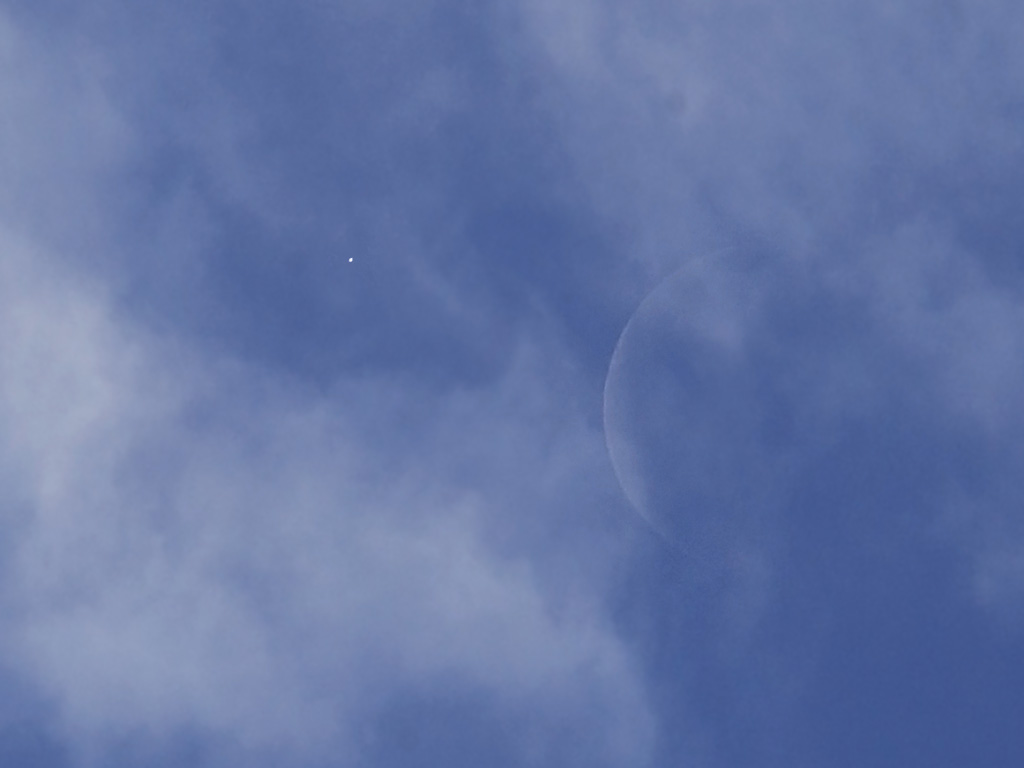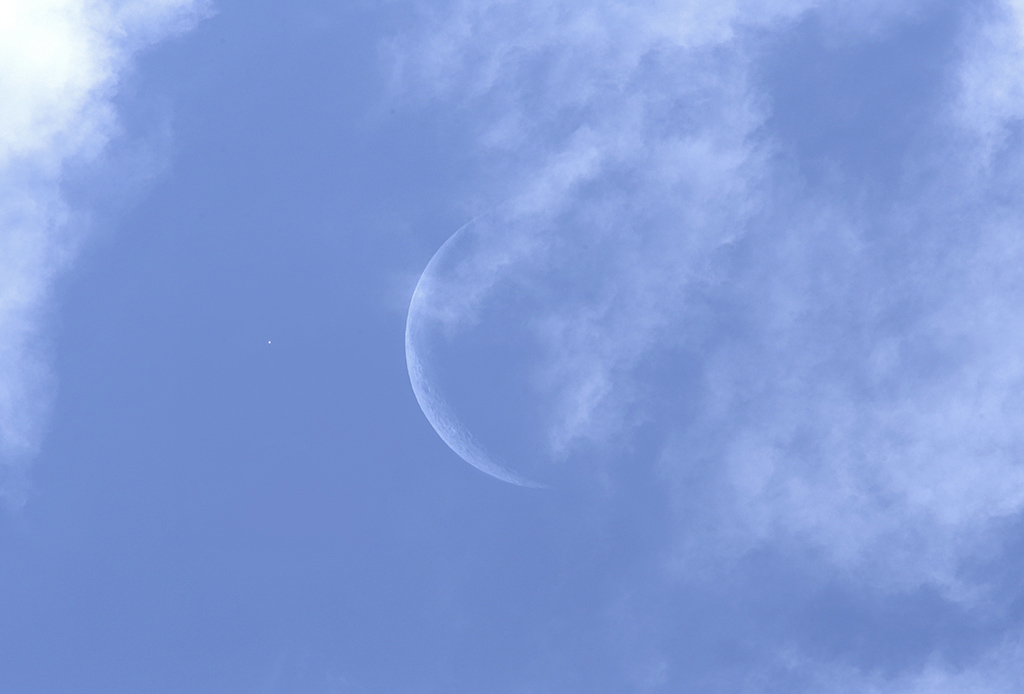K.I.S.S.
Sometimes astrophotography wants to be easy. Let it.
12/07/2015. It's not that nothing has been happening for the last six weeks, and it's not that I haven't done some nice photos. But the photos aren't astronomical, and the astronomical stuff isn't photographic. So we come to this morning when clouds cleared away just as they were supposed to do, and the Moon overran Venus high in a tattered sky just as it was supposed to do.
Yes, as a matter of fact, I did consider hauling the G11 up out of the woods and setting up the 10-inch Newtonian. And I also considered just watching through big binoculars and not bothering with photos at all. But the view from the backyard was compelling. I just grabbed the 6D, put the 70-200mm and a 1.4x teleconverter on it, and plinked away (hand-held, F13, 1/400s, ISO 100). This is a pretty tight crop. There are a lot more where this came from:

And because I couldn't stand it, I dragged out the Linhof with the Giro "just looking" mount on it, attached the 10-inch F4 Newtonian and took several frames with that. I tried exposures of 1/500, 1/1000, and 1/2000 second, both Live View (mirrorless) and regular, all with a remote release and ISO 100, minimizing noise and experimenting with vibrations until Venus and the Moon approached the tops of the pines. By and by, I expect to put a flat and Pixinsight to work to see if I can get good lunar detail out of the light-blue sky along with a clean view of gibbous Venus. Not just yet.
OK, now. This is a web-sized, 1024-pixel presentation of a 4k image in which the phase of Venus is plain:

Venus about to be Occulted by the Moon
Orion 10" F4, Baader MPCC-III
Canon 6D, 1/1000s @ ISO 100, Rutherford College, NC
Click the image for a better look.
Sometimes you sweat blood to guide on 13th magnitude stars, pile up light for 20 hours, process for hours on end, and catch something 80% of the way back to the beginning of the universe. Sometimes you just aim, click, and you're pretty much done.
Interesting how much smaller the image of Venus is in the second photo. That's what sharp focus, more aperture, more focal length, and a steady mount do for you. The top image is cropped much more than the bottom one, so pixels devoted to Venus at the "film plane" are enlarged much more in the web-sized display of the top photo than in the bottom one. Also, in the top image, the planet's light is probably smeared due to camera motion (1/400 second handheld vs 1/1000 second on a reasonably solid mount). Diffraction contributes to the difference, too. 280mm @ F13 means the top photo was made through an aperture of just 21mm. 1000mm @ F4 implies an aperture of 250mm. That's why you get sharper pictures through a telescope, Charlie Brown.
Except where noted, deep-sky photos are made with an SBIG ST2000XM CCD behind a 10-inch Astro-Tech Ritchey-Chretien carried on an Astro-Physics Mach1GTO. The CCD is equipped with Baader wide- and narrow-band filters. The internal guide chip of the CCD most often keeps the OTA pointed in the right direction (I'll let you know when an OAG or guidescope takes its place). Camera control and guiding are handled by Maxim DL 5.12. The stock focuser on the AT10RC has been augmented with Robofocus 3.0.9 using adapters turned on the lathe downstairs. A Canon 6D and a modded 50D find themselves mounted on an Orion 10" F4 Newtonian or carrying widefield glass on an iOptron Skytracker. Beginning in May 2013, PixInsight has taken over more and more of the heavy lifting -- alignment, stacking, gradient removal, noise-reduction, transfer function modification, color calibration, and deconvolution. Photoshop CS4 et seq and the Focus Magic plugin get their licks in, too.
:: top ::